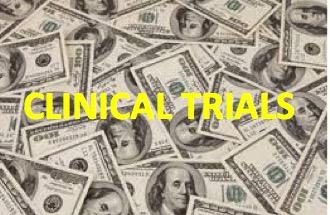
The cost of biopharmaceutical research and development is once again taking center stage in an article authored in the Journal of American Medical Association. In their article, the authors estimated the cost of pivotal trials that led to the approval of a medicine by the Food and Drug Administration, and concluded that pivotal trials for medicines for rare diseases or limited targeted populations cost less than similar trials that require a larger number of patients.
While their conclusion was predictable, the authors tried to correlate the cost of a single pivotal clinical trial and the totality of expenditures incurred during the research and development of a new medicine. The authors failed to consider several important factors that lead to the approval of medicines and, ultimately, to the costs incurred in research.
First, no medicine is ever approved based on a single clinical trial. Regulators such as the FDA look at the totality of the evidence, from pre-clinical research to phase III and post-approval studies. A pivotal trial that most often takes place during the Phase III research segment of R&D is a very small part of the overall R&D expenditures. According to a survey by PhRMA that was published in August, 70 percent of R&D costs incur outside of Phase III research.
Second, more often than not, the FDA requires biopharmaceutical companies to conduct extensive post-approval research. Phase IV trials, otherwise known as post-approval studies, consume approximately 11 percent of total research and development costs, and they are growing faster than any other area of clinical research.
Post-approval commitments are intended to expedite approval of a novel treatment for patients who may have limited or no therapies for their ailments while ensuring that appropriate regulatory oversight takes place. In addition, since payment for medicines by insurers and pharmacy benefit managers requires FDA approval, this allows patients to have access to their medicine through their medical or pharmacy benefits.
Third, similar to another article published in JAMA in 2017, there is no recognition of the impact and cost associated with the multitude of failed studies that eventually lead to successful clinical trial and the ultimate approval of a medicine by the FDA. Seldom if ever is an FDA-approved medicine based on one focused research program. More often, failure is the norm in biopharmaceutical R&D, and success may follow only after years of agonizing research as only 11.83 percent of clinical trials are successful.
The evidence of failure is best depicted in research efforts related to Alzheimer’s disease. From 1998 to 2017, there were 146 unsuccessful medicines in clinical trials for Alzheimer’s. In that same time frame, only four new medicines were approved to treat the symptoms of Alzheimer’s disease. That’s a paltry 2.7% success rate.
It is time for investigators and medical journals that publish their research to recognize the complexity of bringing a medicine to the market. To try and generalize that one single study or one area of research curriculum significantly impacts the approval of the medicine that can then be correlated to the cost of the entire R&D process is at best naïve and at worst misleading.
We will all be better served if we have an open and transparent dialogue regarding the economics of drug development. Doing so will allow us to take a positive step forward in the important discussion surrounding pharmaceutical costs within the health care ecosystem and continue our work in providing hope for patients who need life-saving medicines.
Robert Popovian is the vice president of Pfizer U.S. Government Relations.
This article was originally published in Morning Consult November 8, 2018


